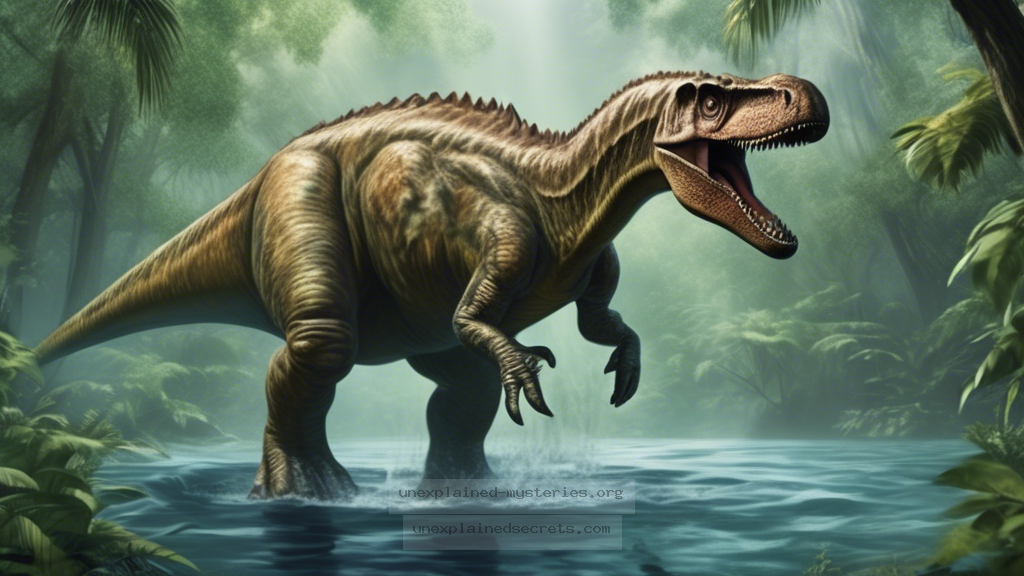What Ever Happened to the Mokele-Mbembe: The African Dinosaur That May Still Roam the Congo?
What Ever Happened to the Mokele-Mbembe: The African Dinosaur That May Still Roam the Congo?
The mystery of the Mokele-Mbembe, often dubbed as Africa’s version of the Loch Ness Monster, has captivated cryptozoologists and adventure seekers for decades. This enigmatic creature is said to inhabit the swamps and rivers of the Congo Basin, and reports of its sightings have sparked both intrigue and skepticism. In this blog post, we will delve into the various aspects of the Mokele-Mbembe mystery, examining historical accounts, core theories, and the implications of such a creature’s existence.
Historical Context: The Origins of the Mokele-Mbembe Legend
The legend of the Mokele-Mbembe dates back to the indigenous people of the Congo, particularly the Bakuba, who describe a large, herbivorous creature resembling a sauropod dinosaur. The name “Mokele-Mbembe” translates to “one who stops the flow of rivers,” hinting at the creature’s immense size and potential impact on its environment. Historical accounts of the Mokele-Mbembe began to surface in the early 20th century, capturing the imagination of explorers and scientists alike.
One of the earliest documented encounters occurred in 1776 when a French missionary, Father L. A. A. F. de la Croix, reported hearing tales of a large, dinosaur-like creature from local tribes. Over the years, various expeditions have attempted to locate the Mokele-Mbembe, including prominent figures like explorer Paul Sereno in the late 1990s. These expeditions often yielded little more than anecdotal evidence, but they contributed to the lore surrounding the creature.
Core Concepts: What is the Mokele-Mbembe?
Described as a massive, long-necked herbivore, the Mokele-Mbembe is often compared to the Apatosaurus or Brachiosaurus. Witnesses claim it can reach lengths of up to 30 feet, with a long tail and a bulky body. The creature is said to have a grayish-brown color, blending seamlessly into the murky waters of its habitat.
The concept of the Mokele-Mbembe challenges conventional science, as no conclusive evidence has been found to support its existence. Yet, several hypotheses attempt to explain why such a creature might still be alive. Some proponents suggest that it could be a surviving species of a prehistoric dinosaur, while others argue it may represent an undiscovered species entirely. The habitat of the Congo Basin, with its dense jungles and vast waterways, provides a remote setting where such a creature could evade human detection.
Evidence and Sightings: Documented Cases of Mokele-Mbembe
Over the years, numerous sightings of the Mokele-Mbembe have been reported, with varying degrees of credibility. Some notable cases include:
- 1959: A Belgian explorer named G. L. DeWitt claimed to have seen a large creature in the Congo River, describing it as having a long neck and tail.
- 1983: A team of researchers led by American cryptozoologist Roy P. Mackal conducted an expedition and collected testimonies from locals, many of whom described encounters with the Mokele-Mbembe.
- 2005: An expedition led by the Discovery Channel filmed a documentary titled “Mokele-Mbembe: The Last Dinosaur,” which included interviews with locals and attempts to capture evidence of the creature.
Though these sightings provide intriguing narratives, they often rely on anecdotal accounts. Scientific scrutiny requires more substantial evidence, such as photographs, physical remains, or DNA samples, none of which have been definitively linked to the Mokele-Mbembe.
Scientific Investigations: What Have Researchers Found?
Despite numerous investigations, the scientific community remains largely skeptical about the existence of the Mokele-Mbembe. Most researchers argue that the lack of physical evidence, such as bones or carcasses, makes it improbable that such a large creature could exist undetected in a heavily explored area.
However, some scientists speculate that the Mokele-Mbembe could represent a previously unknown species, possibly a large aquatic reptile or a surviving member of the dinosaur lineage. In recent years, advancements in environmental DNA (eDNA) technology have opened new avenues for investigation, allowing scientists to collect and analyze genetic material from the environment. This method could potentially yield insights into undiscovered species that share the habitat with the Mokele-Mbembe.
Alternative Perspectives: Skepticism and Hoaxes
While many enthusiasts passionately believe in the existence of the Mokele-Mbembe, skepticism runs deep within the scientific community. Critics argue that most sightings can be attributed to misidentifications of known animals, such as crocodiles or hippopotamuses. The possibility of hoaxes and exaggerated tales further complicates the investigation, as sensational stories often overshadow more credible accounts.
Moreover, the cultural significance of the Mokele-Mbembe among local tribes can influence perceptions. The creature serves as a symbol of strength and mystery, and tales of its existence may be embellished over time. This leads to a complex interplay between folklore and reality, challenging researchers to separate fact from fiction.
Common Misconceptions: What People Get Wrong About Cryptids
Misconceptions abound when it comes to cryptids like the Mokele-Mbembe. Here are some common misunderstandings:
- All Cryptids Are Hoaxes: While some are indeed fabricated, many cryptids have origins in cultural folklore and may represent real phenomena.
- Cryptids Are Always Large: Many reports describe smaller, undiscovered species that defy traditional classifications.
- Science Dismisses All Cryptids: While skepticism exists, many scientists are open to investigating claims when credible evidence is presented.
Best Practices for Investigating Cryptids
For those interested in pursuing investigations into cryptids like the Mokele-Mbembe, here are some best practices:
- Research Extensively: Familiarize yourself with historical accounts, local lore, and previous investigations.
- Engage with Locals: Local tribes often hold valuable knowledge about their environment and can provide insights into sightings.
- Document Everything: Maintain detailed records of findings, including photographs and firsthand accounts.
- Collaborate with Scientists: Partnering with professionals can lend credibility and expertise to your investigation.
- Remain Skeptical: Approach the subject with an open yet critical mind, recognizing the difference between evidence and speculation.
Future Developments: Is There Hope for Discovery?
The quest for the Mokele-Mbembe continues, supported by advancements in technology and a growing interest in wildlife conservation. As environmental DNA research evolves, it may allow for the discovery of unknown species residing in the Congo Basin. This could provide a scientific foundation for understanding the Mokele-Mbembe should it exist.
Additionally, the increasing collaboration between cryptozoologists and mainstream scientists may lead to more rigorous investigations and a more nuanced understanding of the ecological dynamics in the region. The allure of the Mokele-Mbembe remains strong, serving as a reminder of the unexplored mysteries that our planet holds.
Conclusion: The Enduring Mystery of the Mokele-Mbembe
The Mokele-Mbembe embodies the intersection of myth and science, captivating our imagination and challenging our understanding of the natural world. While skepticism is warranted, the quest for this elusive creature encourages curiosity and exploration. As technology and methodologies advance, we may inch closer to resolving the mystery of the Mokele-Mbembe, or at the very least, deepening our appreciation for the unknown. Whether it ultimately exists or not, the legend of the Mokele-Mbembe will continue to inspire adventurers and scientists alike in their pursuit of the extraordinary.
Other Articles
Recent Posts
- What Happened to Flight MH370? The Conspiracy Theories That Still Haunt Us
- What Secrets Lurk Within the Walls of the Infamous Trans-Allegheny Lunatic Asylum?
- What Evidence Supports the Existence of Bigfoot in the Pacific Northwest?
- What Happened to the Indus Valley Civilization? Unraveling the Mysteries of Ancient Urban Life
- Can Telepathy Be Scientifically Proven Through Laboratory Evidence?







